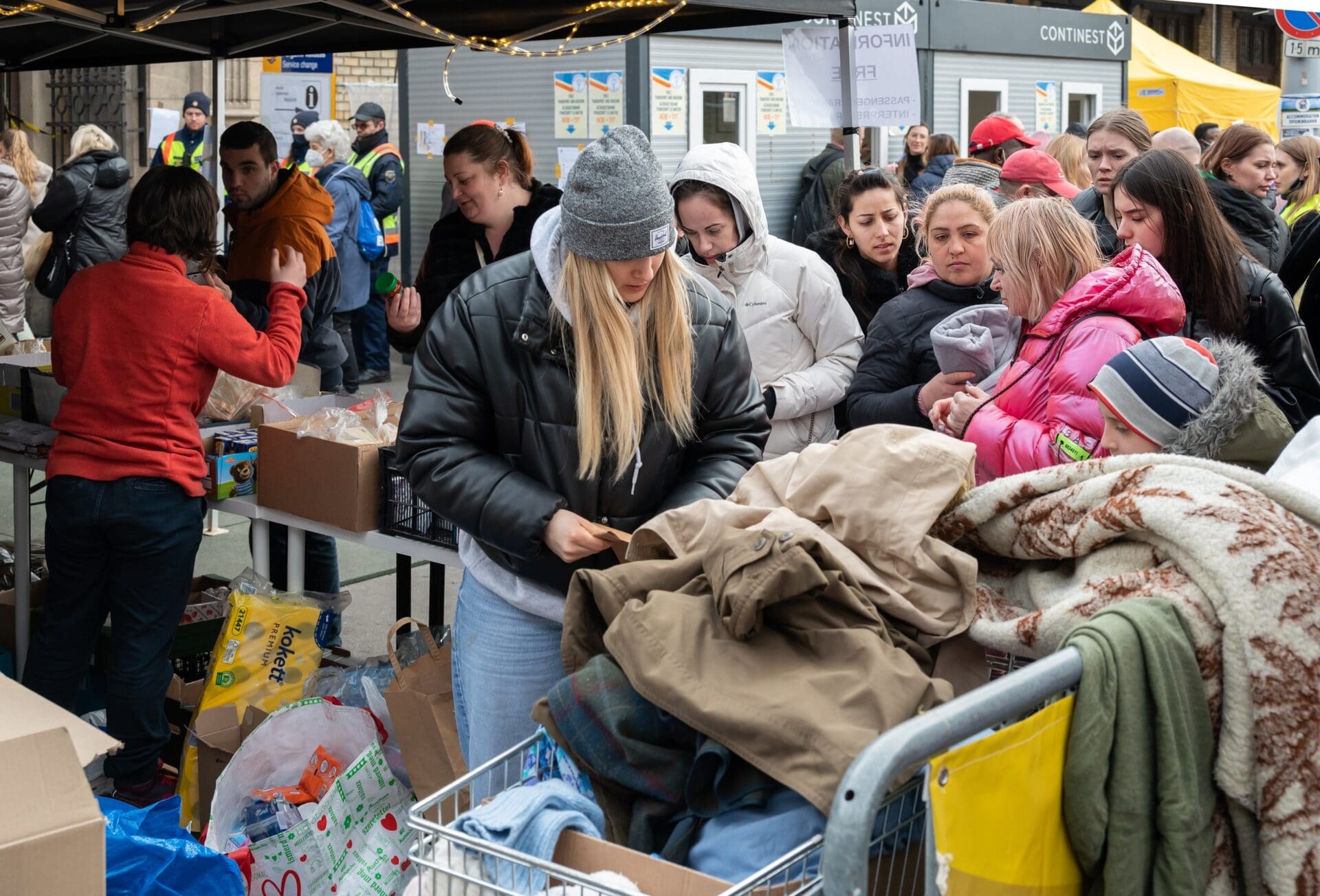Over the last couple of weeks, the number of refugees from Ukraine to Hungary has significantly increased. According to the information published on the Hungarian Police’s website, on 5 January, 5,264 people crossed the Hungarian-Ukrainian border, while an additional 10,188 people crossed the Hungarian-Romanian border, many of whom declared that they were coming from Ukraine. By 8 January, these numbers have further increased to 5,999 and 12,827, respectively. While so far the numbers for January moved between 15 thousand and 18 thousand, in the previous month, in December, the number of border crossings (per day) was much lower, around 6–10 thousand. Albeit not all of these border crossings were made by Ukrainian nationals, the significant increase in entries at both borders does mean a higher number of Ukrainian citizens looking for shelter in Hungary.
Since the beginning of the war, around 967,000 Ukrainian nationals have travelled through Hungary as refugees. The Hungarian Police, the Hungarian State Railways, and charities are all ready at the border to help those fleeing. Hungarians have shown a remarkable readiness to help Ukrainian refugees find shelter in the country. Regarding refugees from Ukraine, Hungary has undertaken the largest humanitarian aid operation in its history—as we have reported earlier.
According to official EU statistics, as of 6 December 2022, 4.8 million Ukrainian nationals have come to the European Union as refugees fleeing from the war in Ukraine. As of November, in total, Poland has issued Temporary Protection Status (TPS) to around 1.4 million Ukrainian nationals, Germany to 813,725, Spain to 145,825, and Bulgaria to 134,790. While, understandably, in the early weeks of the war EU member states issued a very high number of TPSs to Ukrainian nationals, during the summer months much fewer TPSs were issued. For instance, while Hungary issued 7,075 TPSs in April, this number dropped to as low as 1,220 in September. Now, however, with the arrival of the winter, both border crossings to the neighbouring states of Ukraine (such as Hungary) and applications for TPS are on the rise again. While the number of refugees is growing, the EU member states’ ability to support the refugees has decreased due to the economic crisis in the Union.
The fact that the end of the war is nowhere in sight is transforming the perceptions of their prospects of Ukrainian nationals as well. A survey conducted in Germany with the participation of 11 thousand Ukrainian refugees found that around one third of Ukrainians would like to stay in Germany in the long run and not return to their home country once war ends. 26 per cent of the survey respondents said that they want to stay in Germany indefinitely, and 11 per cent said they wish to stay in the country for a couple of years. Only 2 per cent said that they would like to return to Ukraine within the next year.
The uptick in the number of refugees is hardly surprising. Since late October, Russia increasingly uses shelling and missile attacks as a weapon—including targeting critical infrastructure, which rapidly contributed to the deterioration of people’s well-being in the country. The buildings in the cities heavily affected by the conflict are left with no windows, and with significant problems with the energy supply. It is estimated that 40 per cent of housing across Ukraine have been damaged by the war. Around 40 per cent of Ukraine’s energy infrastructure has also been damaged, and the total damage caused to the Ukrainian infrastructure as a whole was estimated to be around $95.5 billion in June. As a result, the poverty rate has increased from 2.5 per cent in 2020 to 25 per cent by November 2022—as we have reported earlier.
As the devastation of Ukraine’s economy demonstrates, the cost of the war is not only the casualties, but also the destruction of the built environment, infrastructure, and the economy as well. The cold winter has only exacerbated the difficulties of the population in war-torn areas. While until now Ukrainians have remained steadfast in their resolve to continue the war, with the unprecedented challenges the civilian population is now facing the question arises—how long will the war last? Isn’t it time for peace?
Related Articles








